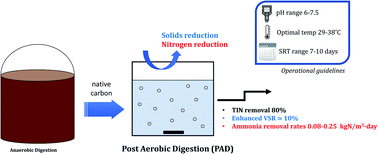Post aerobic digestion (PAD) is a solids sidestream nutrient removal process that utilizes native carbon: performance and key operational parameters from two full-scale PAD reactors
Abstract
Nutrient management is a critical issue for Water Resource Recovery Facilities, and sidestream treatment technologies to reduce nutrient loads often focus on liquid sidestreams and require external carbon sources. Post aerobic digestion (PAD), whereby an aerobic digester follows an anaerobic digester, treats a solids stream (i.e., anaerobic digester effluent) to reduce nitrogen loads. Volatile solids reduction occurs in this process with residual organic compounds serving as a native carbon source for denitrification. While this process has been evaluated at the lab-scale, information on operational parameters that affect full-scale performance is limited. We evaluated two separate full-scale PAD reactors to determine process performance and key operational parameters. During healthy operation, ammonia removal was greater than 90%, total inorganic nitrogen removal was greater than 80%, and volatile solids reduction was approximately 10%. Low SRT values of 7–10 days, pH ranges of 6.0–7.5, temperatures from 29–38 °C (85–100 °F), and negative ORP values resulted in good performance.

- This article is part of the themed collection: Topic Collection: Wastewater Treatment


 Please wait while we load your content...
Please wait while we load your content...